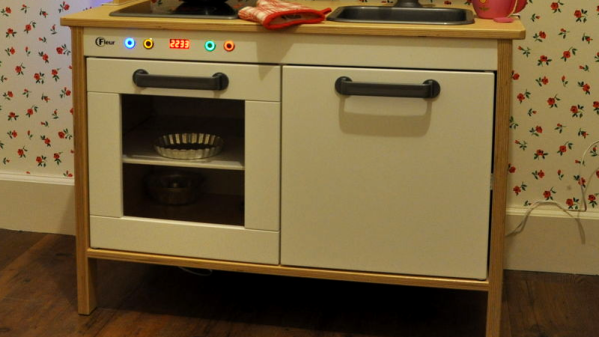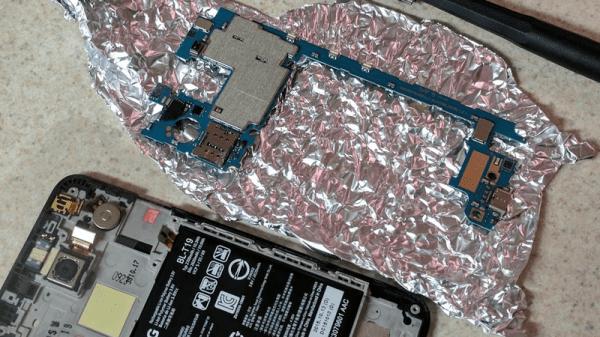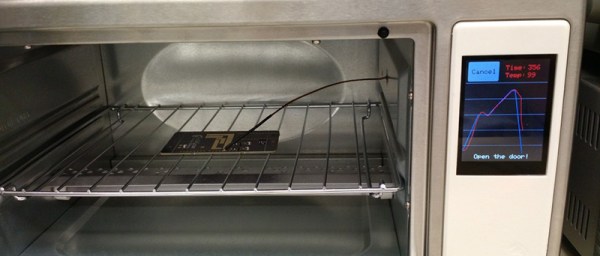Children have always liked to learn by copying the adults around them, and thus have always desired toys that emulate the tools which their older forebears use on a daily basis. [rhoalt]’s daughter wished for an oven to play with, so a trip to IKEA was in order to get started.
The build begins with the IKEA Duktig, a beautiful fun-sized oven. [rhoalt] then breaks out the hacker staple foods of 7-segment displays, swanky backlit buttons and an Arduino Nano. Through some careful handiwork, the wooden panels that make up the toy oven are drilled and routed out to fit the components.
The electronics are all used to create an oven with a digital timer, and the final effect achieved is rather nice. The glowy buttons can be used to set and reset the timer, while an LED strip inside lights up to simulate cooking. [rhoalt] shares all the construction details along with some parent-friendly tips, like taping over the buzzer to reduce the volume, and ensuring the timer is limited to 10 minutes to avoid any late-night surprises.
It’s a tidy project with a strong sense of fun, and the presentation is top-notch. Even we older, jaded hackers light up for a good glowy-buttoned project, so we’re sure [rhoalt]’s daughter loves her new toy. For more toy oven action, check out this Easy Bake converted to USB. Video after the break.

















